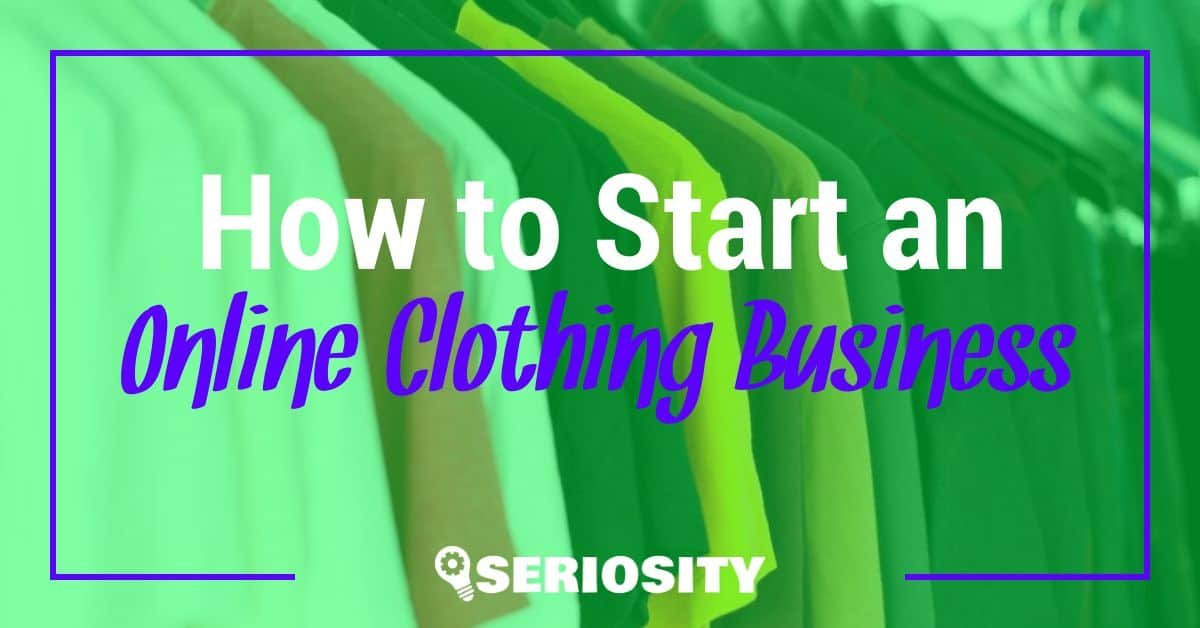If your aspiration is to be your own boss, run your own company, and keep more of the money you earn, you cannot do better than starting an online clothing business. This is a billion-dollar-a-year industry which is set to reach $1 trillion by 2025. Some experience in fashion and retail can be a bonus. But you can be just as successful without any experience in these fields. The most important things you need are energy, drive, and a willingness to learn.
Your success as an online clothing retailer will depend on the niche market you choose, the branding you establish, the quality of the clothing you offer, and the customer service you provide.
The Steps to Start Your Online Clothing Business
1. Choose your niche
There are thousands of online clothing stores online. Because this is not a new industry, you will need to choose a specific area of specialization or line of clothing that will set you apart from your rivals. This will help you create a clothing line and business plan around the type of potential customers you want to appeal to.
When choosing your niche, you want to be as specific as possible. Try to figure out your ideal customer and what he or she may want to wear. Doing so will allow you to select the products you want to package and sell. It will limit your direct competition and give you a better chance at developing a loyal customer base.
Here are a few tips for choosing your niche market:
- Be as unique as possible to stand out from your rivals
- Choose a niche that interests you and that you are passionate about
- Figure out whether you can position yourself as an authority on this line of clothing
- Ensure the niche you choose has earning potential
2. Choose your clothing products
Once you know what kind of clothes you will sell, it is time to choose the individual products. There will be a great many items to choose from. You should start small and gradually branch out. Adding too many products upfront will entail tremendous admin costs. Because you are an online retailer, you will need to product photo shoots of every item you put up for sale. This is the kind of overhead you can do without when you are just getting started.
You must also think ahead. Fashion and clothing fads are in constant flux, which is why you should select more stable products first. As time goes on, you will get a better sense of what people in your niche want and you can adjust your inventory to reflect that.
The bottom line is to stay focused. Think about where you see your clothing brand going in the future and ensure you are doing what is necessary to get it there. This will help you add that range and mix of products that are required for you to grow in your niche.
3. Choose your business model
In general, there are four types of business models that online clothing stores fall into. They are as follows: print-on-demand, custom cut-and-sew, private label, dropshipping. We will take a brief look at each one.
Print-on-Demand
In this type of store, you print your logo and design onto blank apparel. There is enough variety within this business type for you to be cost-effective in servicing a small number of orders.
Custom Cut-and-Sew
This is the best option if you want to launch your own clothing brand and design. If you have the experience and expertise to build a complete clothing line from scratch, this is the kind of business model you will need to follow. Bear in mind that in the beginning, you will need to do everything—from manufacturing to fulfillment—yourself.
Private Label
In this model, you will buy wholesale clothing and accessory products which you then sell and market under your own fashion brand and label. This can be more cost-effective than the print-on-demand model as you can negotiate better rates for bulk buying. This model still requires you to do inventory and fulfilment management on your own.
Dropshipping
This model allows you to sell clothing that you receive from wholesalers. This is the most cost-effective way of running an online clothing company, and it is probably the best option for those with little or no experience in the fashion or clothing industry. The only downside of going this route is that the products will not be unique, and you will encounter intense competition from a variety of stores selling products like yours.
4. Create a Business Plan
To get the funding your need, and to keep yourself on track, you must create a business plan. Any serious investor or funding source will want to see a business plan before they give you money. The plan should include specifics on the following:
- Market: You will need to describe your potential shoppers and target audience
- Products: Telling your audience what makes your product or business unique
- Biggest competitors: You must show that you know who your closest rivals are (by name)
- Branding strategy: How you intend to establish your store brand and target your niche market
Your business plan should include your pricing strategy. It should also include a preliminary budget. These are some of the costs you should be able to deal with:
- Equipment, web development, hosting, etc.
- Design and development
- Production cost per product
- Labor and transportation
- Materials
Once you know the costs, you will be able to work out the margins.
5. Set yourself up online
The first thing you will need is a domain. You should purchase this as soon as you have your main ideas and business plan worked out. You can buy a domain name directly through eCommerce platforms such as Shopify or WordPress.
The only way to design a world-class website is to hire a professional web designer. You should consider putting this in your startup budget. Alternatively, you can try to teach yourself WordPress through web builder sites such as Squarespace, Wix, or Shopify.
6. Launching your store
Here are some of the things you will need to do:
Define your launch strategy
You can do this through a Facebook Live video or using an email database to send teaser emails. Whichever strategy you choose, you will need to proofread the contents and test your store’s functionality before going live
Prepare your social media accounts
Make sure your Facebook, Twitter, and Instagram accounts are ready for the big day. You should coordinate the posting of social media ads with your launch.
Ensure your Google Analytics and Google Ads accounts are set up
Make sure both are ready to go. This will enable you to track the amount of traffic to your store during the launch in real time.
7. Bringing traffic to your store
The biggest traffic drivers are email marketing, PPC, content marketing, social media, guest posts on popular blogs, and influencers.
You should take social media and influencers especially seriously. Influencers are people on social media who already have large followings. Most of these people do daily podcasts in which they talk about whatever happens to be on their mind that day. If you can get them to put in a good word about your online clothing store, you will see an uptick in interest and sales.
It is also important to have a robust social media presence. Posting regularly on Facebook Twitter, Instagram, and YouTube will keep you connected to past and potential clients. It will also give them the opportunity to engage directly with you.
Social media also allows you to humanize your company. You will be able to post videos and photos of your employees at work on any given day. This will provide a unique insight into the day-to-day operation of your business, which actually draws people in and gets them interested in your brand.
Social media is also good for announcing deals, discounts, and other special offerings. More and more people spend most of their time scrolling through their social media accounts than other online sites. In many instances, you are more likely to get their attention and make them aware of new deals and products if you post them on your social media page.
If you have decided to make and sell your clothes, you will want to look at leading online fashion examples for inspiration, including the following:
- Gearbunch
- Beyond Retro
- Beautiful Disaster
- Envy Stylz





